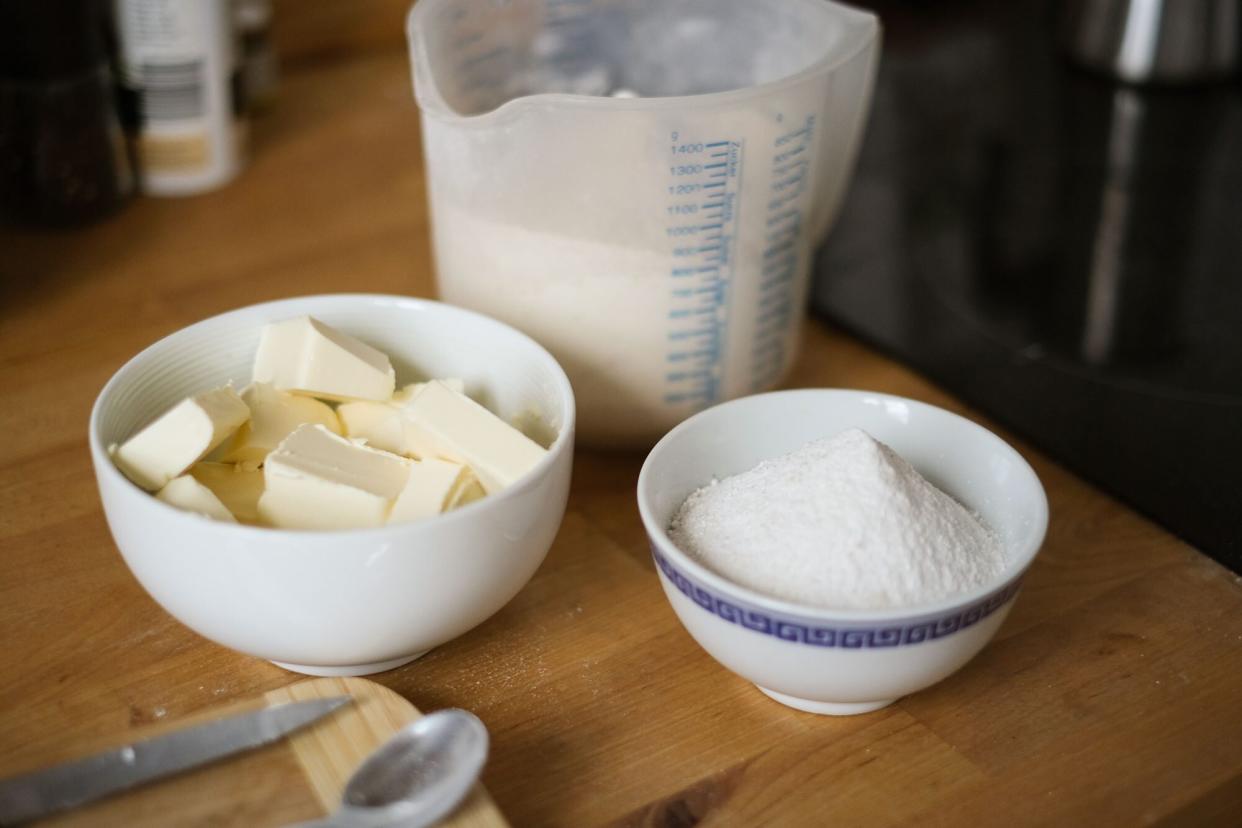Why Do We Cream Butter and Sugar When Making a Cake or Cookies?

Katrin Sauerwein / EyeEm / Getty Images
If you're on a mission to fine-tune your baking skills, learning how to cream butter and sugar is an excellent place to start. Not only is it an essential step in many cake and cookie recipes, but it can prevent common cake problems like crumbly textures or dense layers. Ahead, we explain the purpose of creaming butter and sugar and explain how to do it just right.
Related: Should You Use Salted or Unsalted Butter for Baking?
Why Cream Butter and Sugar?
It's easy to think of creaming butter and sugar as simply combining two ingredients, but that's not quite the purpose; it's primarily done to aerate the butter, which will support the structure and texture of your cake. Specifically, the aerated butter prepares the batter for emulsification, or the process of combining fat and water molecules to form a uniform mixture. Fat and water, after all, normally don't mix. Think of a vinaigrette, in which the oil (fat) separates from the vinegar (water), says Kathryn Gordon, chef-instructor of pastry and baking arts at the Institute of Culinary Education. The oil naturally floats on top of the vinegar, but if it's broken down with a whisk or blender, it can fully blend and emulsify with the vinegar.
Similarly, a cake batter calls for fat (butter) and water in the form of ingredients like eggs or milk, but in order for these components to properly combine, the butter needs to be structurally altered first. That's where sugar crystals—which are tiny and sharp—come in. "During the creaming process, sugar physically makes space for the butter to hold additional liquids," explains Gordon. This ensures all the fat and water in the recipe can successfully emulsify, she says. As a result, the cake will develop the right height and structure, along with a wonderfully light and fluffy texture.
How to Cream Butter and Sugar
When it comes to creaming, you'll need softened, or room temperature, butter. To determine if your butter is the right temp, simply press it with your finger. If the butter holds the indentation without falling apart, it's good to go. If it's too hard, leave it out at room temperature to let it soften first. This can take several hours, depending on the temperature of your kitchen, says Gordon. Next, fasten a paddle attachment to your stand mixer. If you can, avoid using a whisk attachment, as the butter will get stuck in the whisk, requiring you to repeatedly scrape it out.
It's also worth noting that many cake recipes refer to creaming as "beating." For example, a recipe might instruct you to "beat the butter and sugar until light and fluffy," as it does in our chocolate-flecked layer cake recipe. This is just another way of saying "cream the butter and sugar," so don't let the term throw you off. Additionally, you'll typically need to cream the ingredients at a medium speed. Gordon recommends avoiding high speeds, as "this can add large [i.e., unstable] air bubbles to the batter, which can cause a cake to collapse when baking," she says. It's also essential to periodically stop and scrape the mixture with a silicone spatula to make sure everything is evenly combined, notes Gordon. Once creamed, the ingredients will develop a fluffy and creamy texture—thus the term "creaming."
Tips for Creaming Butter and Sugar
It's essential to use softened, but not melted, butter. Once aerated, melted butter will not be able to properly "hold" other ingredients, so your finished cake won't have the right texture and structure. Also, after the butter and sugar are creamed together, room temperature eggs are almost always added next, says Gordon. Be sure to whisk the eggs first, as it will help the creamed butter and sugar stay together as you work. "Even if it's only one egg, whisk it well. You need to be able to add the egg gradually while the butter and sugar are mixing—or the emulsion can still break even if the ingredients are all [at] room temperature," she explains.
On that note, to determine if your butter and sugar are sufficiently creamed and ready to "hold" (or emulsify with) other ingredients, trickle in a bit of whisked egg as the mixer is mixing, suggests Gordon. If it's ready, the mixture will stay in a fluffy state. If not, it will look wet and separated. In this case, continue mixing until it becomes fluffy again, then slowly trickle in the egg, says Gordon. If it looks curdled at any point, just beat for a few more seconds before adding anything else.
If you need to bake a last-minute cake and only have cold butter, "chop it up with a bench scraper into ½-inch pieces," recommends Gordon. This will quickly bring it to room temperature. Next, mix the butter without sugar on a speed slightly higher than medium until it softens and becomes fluffy, then continue with your recipe as usual.

